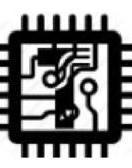Responding to Requests for Proposals (RFPs) is a critical business activity for many companies, and it requires a blend of analytical reading, strategic writing, and captivating presentation. Understanding how to effectively respond to an RFP can be the determining factor in winning a new project or client. From dissecting the RFP to following up with an RFP response, there are key steps to navigating this complex process. In this article, we offer a comprehensive guide to help you craft successful responses that can enhance your chances of securing business.
Understanding the RFP: Decoding the Requirements and Expectations
An RFP is a document that outlines the specific needs and criteria of an organization seeking to procure services or products. As a respondent, your first task is a meticulous review of the RFP. Pay close attention to any deadlines, as well as the mode of submission outlined in the document.
 Once you have a grip on the basic parameters, delve deeper into the specific requirements. Differentiate between the must-haves and the nice-to-haves. Adjust your focus on the deliverables that are critical for the RFP issuer without overlooking the comprehensive list of requirements.
Once you have a grip on the basic parameters, delve deeper into the specific requirements. Differentiate between the must-haves and the nice-to-haves. Adjust your focus on the deliverables that are critical for the RFP issuer without overlooking the comprehensive list of requirements.Take note of the evaluation criteria as well. Knowing how your RFP response will be judged gives you a competitive edge. Tailor your response to meet these criteria, showcasing how your offerings align with the client's priorities. This alignment is often what differentiates a winning proposal from a generic one.
Crafting a Compelling Executive Summary: Your First Impression
The executive summary is the entryway into your proposal. It's crucial to capture the essence of your response, succinctly conveying why your company is the best choice. Begin by clearly understanding and reiterating the problem or need of the RFP issuer, connecting it to your ability to provide the solution.
Keep the language clear and jargon-free. Senior executives often scan the executive summary to make an initial judgment; too much technical language can obscure your message. If a reader can easily understand the value you are offering without delving into the specifics, you're on the right track.
Align the tone of the summary with the RFP’s language. If the RFP is formal, match that formality; if it's more conversational, you may have some flexibility to infuse your company’s personality into the summary. The key is to reflect the client's culture and expectations in your writing.
Developing a Solution-Driven Proposal: Techniques for Standing Out
Your RFP response should not just offer a service; it should present a solution to the client's problem or need. Begin by framing your proposed solution within the context of their pain points, then guide them through how you'll address each one.
Innovation can be a key differentiator in a pile of proposals. If you are introducing novel ideas or cutting-edge technology, ensure that you explain them in an accessible manner. Demonstrating how your innovative approach or tools make a tangible difference can pique interest and set you apart from competitors.
Furthermore, ensure that every part of the proposal speaks to the client’s ultimate goal. Whether that’s increasing efficiency, reducing costs, or breaking into markets, tie your solutions to these outcomes.
Overall, creating an effective RFP response demands strategic preparation, mindful customization, and proactive engagement. By meticulous adherence to RFP requirements and executing a standout proposal that tailor-fits the client's needs, you elevate your chances for selection. Remember, each opportunity is a building block in your business's reputation for excellence and reliability.

